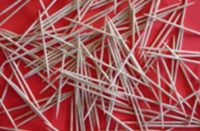 Although the main purpose of sealers is to beautify and protect, some sealers can also be used for darkening concrete. Water-based sealers do not change the color of the decorative concrete, but solvent-based sealers darken the color by several shades. This darkening effect is called color saturation. The color saturation remains as long as the seal coat is maintained. If the decorative project seems to have “lost” its color, a new coat of solvent-based sealer will likely restore the beautiful rich color.
Although the main purpose of sealers is to beautify and protect, some sealers can also be used for darkening concrete. Water-based sealers do not change the color of the decorative concrete, but solvent-based sealers darken the color by several shades. This darkening effect is called color saturation. The color saturation remains as long as the seal coat is maintained. If the decorative project seems to have “lost” its color, a new coat of solvent-based sealer will likely restore the beautiful rich color.
On a project where different colors are desired, a simple solution is to use a solvent sealer in the darker field and a water-based sealer or a stand-alone wax (for interior projects) in the lighter field. It is much easier to control and to correct the sealers than to use stains or other products to produce color. The color change produced by a sealer will always perfectly coordinate with the original color. If the sealer wicks or bleeds, a bit of xylene or thinner can be used to correct the problem. Likewise, if you decide that you do not want the different color, strip away the sealer and you are back to the original color.
Another way to change the color of decorative concrete is to use a pigmented sealer. Pigmented sealers come in a variety of types such as water-based, solvent-based, and penetrating sealers. Pigmented sealers are usually translucent and will act to glaze over the original color. If you apply a pigmented sealer that is the same color as the stain or color type, the sealer will cause the original color to become more uniform. This color layering will minimize any highlights or variations in the color. If you change the color of the sealer, then you will change the color of the finished product. Always work with samples first to approve the effect.
 There are new penetrating and pigmented sealers available that cause the color of the sealer to settle into the crevices of the concrete. If you use a black or deep brown penetrating sealer over decorative concrete with any pits, crevices, or texture, you will achieve a fabulous antiquing effect. The pits, scratches, texture and surface imperfections allow the dark colored sealer to settle and accumulate. If, for example, the decorative concrete is stamped brick or stained and cut to look like stone, the dark sealer will settle in the pits and create the appearance of a brick or stone floor that has been there for decades or longer.
There are new penetrating and pigmented sealers available that cause the color of the sealer to settle into the crevices of the concrete. If you use a black or deep brown penetrating sealer over decorative concrete with any pits, crevices, or texture, you will achieve a fabulous antiquing effect. The pits, scratches, texture and surface imperfections allow the dark colored sealer to settle and accumulate. If, for example, the decorative concrete is stamped brick or stained and cut to look like stone, the dark sealer will settle in the pits and create the appearance of a brick or stone floor that has been there for decades or longer.












